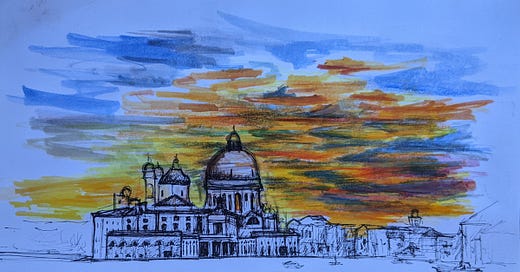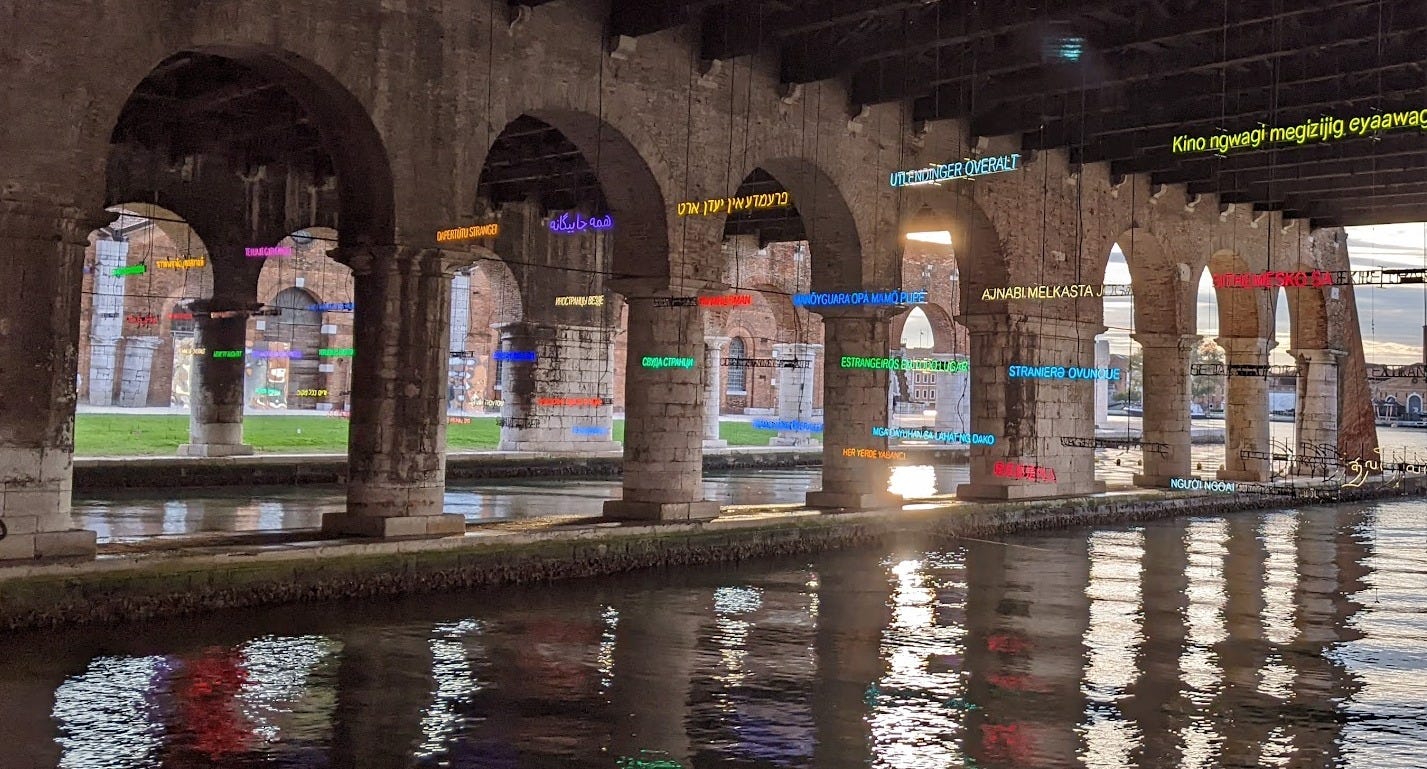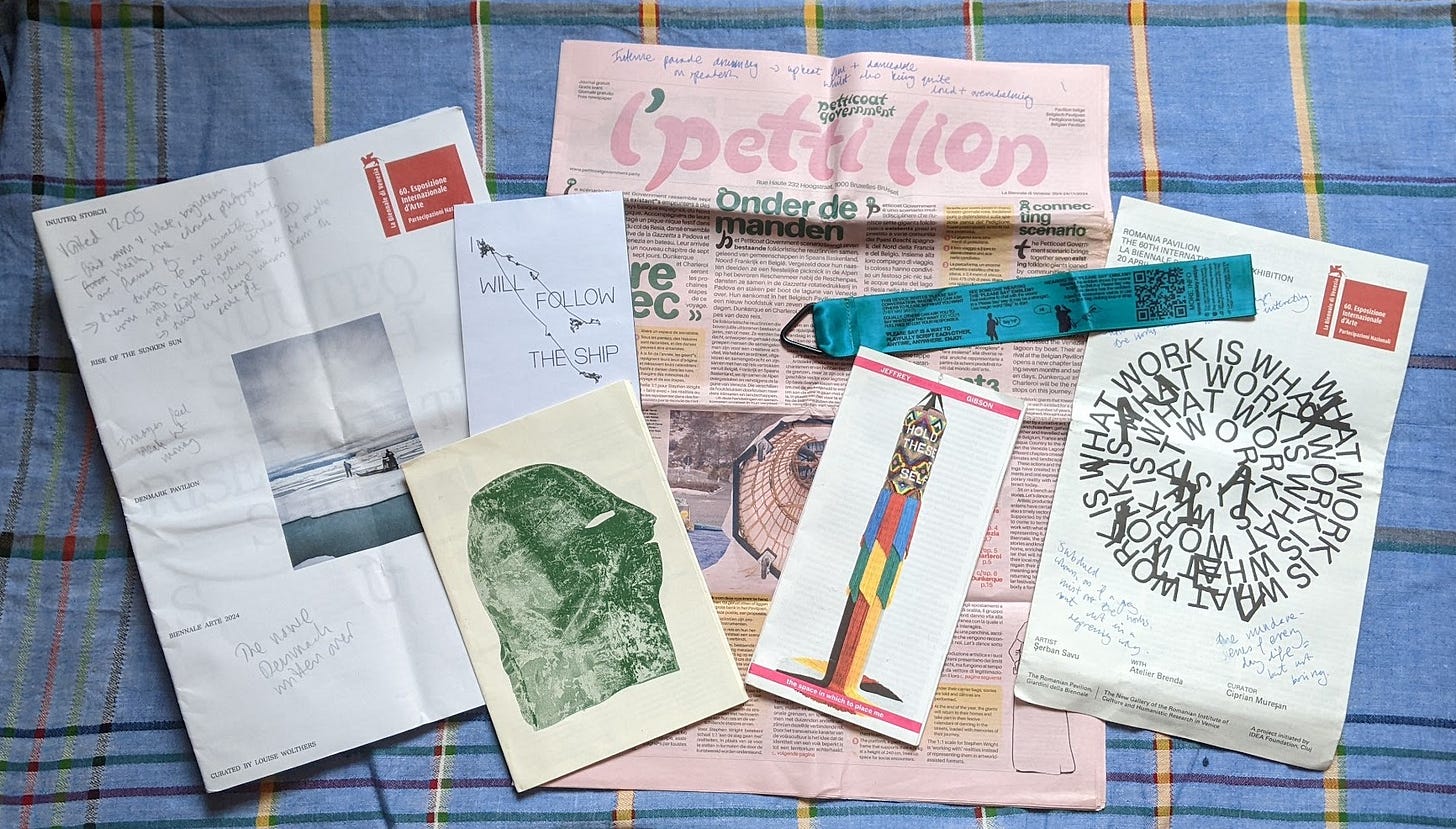Welcome to my first Substack post. This is the first of three articles about the Venice Biennale that you’ll receive over the next couple of weeks – enjoy!
A week ago today, one of the biggest international art events in the world ended its 6 month long run, having welcomed over 700,000 visitors. I visited in October and after two days of non-stop art (and cannoli) consuming, I left feeling inspired, stimulated, and eager to share my thoughts – so here we are!
The Biennale* involved 86 National Participations and an International Exhibition of 331 artists. The exhibition is largely split across two sites on the main island (the Arsenale and the Giardini). In Part 2 I’ll share the works I admired from the Arsenale and in Part 3 those from the Giardini. Meanwhile, here I’ll look at the bigger picture (metaphorically) of the Biennale as a whole.
Titled Stranieri Ovunque (Foreigners Everywhere), this year’s Biennale celebrated indigenous, queer, self-taught, and outsider artists. They may be foreigners to conventional society, to their families, to their own countries. Themes of migration, decolonisation, and LGBTQ pride ran throughout the show, with a large focus on artists who hadn’t exhibited here before.
The National Participations are where countries display an artist of their choosing in their pavilion or designated exhibition space. Generally, they fit the theme of the Biennale and most choose works that reflect contemporary realities of their nation. The most effective National Participations showed one large installation piece or works that formed a cohesive whole, as if a polyptych**. They communicated a clear message, urged me to join in, or made me want to chat with the artist.
The International Exhibition is put together by the Biennale’s curator. This year it was Brazilian Adriano Pedrosa, who split it into two sections: Nucleo Storico (historical) and Nucleo Contemporaneo (contemporary). The former showed works from the 20th century, mainly by non-European artists, with the intention of rewriting history. These pieces should have been exhibited in previous Biennales but had not been because of the narrow-minded Euro-centric nature of the show. Embracing these “foreigners” of the artworld, the exhibition introduced me to a number of inspiring and previously unknown artists.
There is a never ending amount of art to see at the biennale and Museum fatigue*** is inevitable. In the International Exhibition, every artwork is given a caption. Though often providing insightful contexts, they also could be too lengthy or filled with art jargon, making recurring themes seem monotonous (perhaps unavoidable considering the show’s size).
Instead, I enjoyed focussing on an artwork’s physical or aesthetic qualities, making little sketches of them and noting the feelings that they evoked. This let the art and artist speak for themselves and some even gave me an insight into what being “foreign” means to them.
Glossary:
*a biennale is a large international art exhibition held every other year
** a polyptych is an artwork (traditionally an altarpiece) that is split into more than three panels or elements
*** museum fatigue is a state of physical or mental tiredness brought on by the experience of exhibits in a museum or cultural institution
If you like what you read, please share this publication with your family, friends and fellow art lovers, and encourage them to subscribe too!







